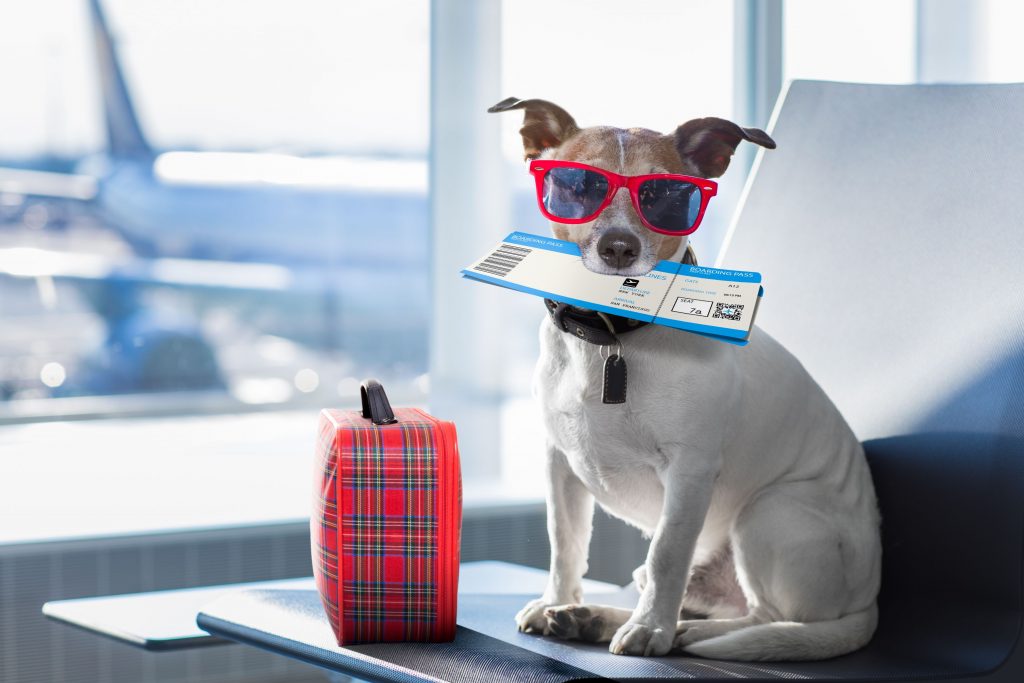Tips for Flying with Your Pets

There is always a risk that traveling with pets can cause a little bit of stress for your furry friends. Flying with pets definitely presents its own set of challenges, but with a little bit of planning, this experience can be fun and safe for everyone.
For better preparations, add the following tips to your list, pronto!
Visit Your Vet
Almost every airline around the globe requires pet health certificates from a reputable veterinarian. Your vet will be able to tell you if air travel is good for your pet. If your pet has extreme health conditions like respiratory problems, it may not be a good choice. Schedule an appointment within 10 days of your departure from your veterinarian for a check-up.
It should include a general wellness examination for sickness symptoms, including but not limited to diarrhea and coughing,and a check to see if rabies vaccinations are up to date. Once you get the all-clear, get a signed and dated clean bill of health from your vet/
What About Traveling? In Cargo Hold or Cabins?
It’s necessary to consider where your pet will spend the duration of the flight before rushing to book tickets. While this may depend on the airline, usually if you travel with a smaller pet, below 20 lbs, you can settle them under your seat in the cabin.
The American Society for the Prevention of Cruelty to Animals (ASPCA) strongly advises against flying with pets in cargo if possible. If you do not have a choice, you must have a sturdy crate approved by IATA (International Air Transport Association). You should, therefore, crate train your pet before flying.
Tips for Air Travel with Pet in Cargo Hold
Follow the following tips if you must fly with your pet in the cargo hold:
- Ensure your pet has a collar to prevent getting caught in carrier doors, a microchip, and an identification tag with your destination details.
- Fly on the same flight as your pet if possible.
- Carry a recent photograph of your pet.
- Clip your pet’s nails to protect them against getting stuck in crevices.
- Examine your pet after the flight.
Consider a Tranquilizer
For a smooth ride, consider giving your pet a tranquilizer. Talk to your veterinarian about the best kind of sedative to give your pet to make him less anxious during the trip.
According to the American Veterinary Medical Association, AVMA, sedated pets, especially short-nosed dogs and cats, are prone to respiratory and heart problems at higher altitudes. Their ability to balance and maintain equilibrium is destabilized–your veterinarian will be able to tell you the risks associated with different sedation methods.
Create a Packing List
Remember to have these items in your pet’s suitcase:
- Health records and pet health certificate
- A vet’s emergency contact at your destination
- Spare collar with an identification tag
- Your pet’s grooming products
- Towels and stain removers
- Comb, brush, and flea control products
- Food and treats for your pup
- Leash and poop bags
- Your pet’s favorite toy and blanket
Flying with pets requires more than just getting on the plane. Make sure you’re aware of the airline’s pet policy restrictions, pet travel certificates, and any international pet restrictions at your destination. Most importantly, you must prioritize their needs, health, and safety.
Are you considering flying with pets? What are your concerns and how can we help? Please contact us today.
